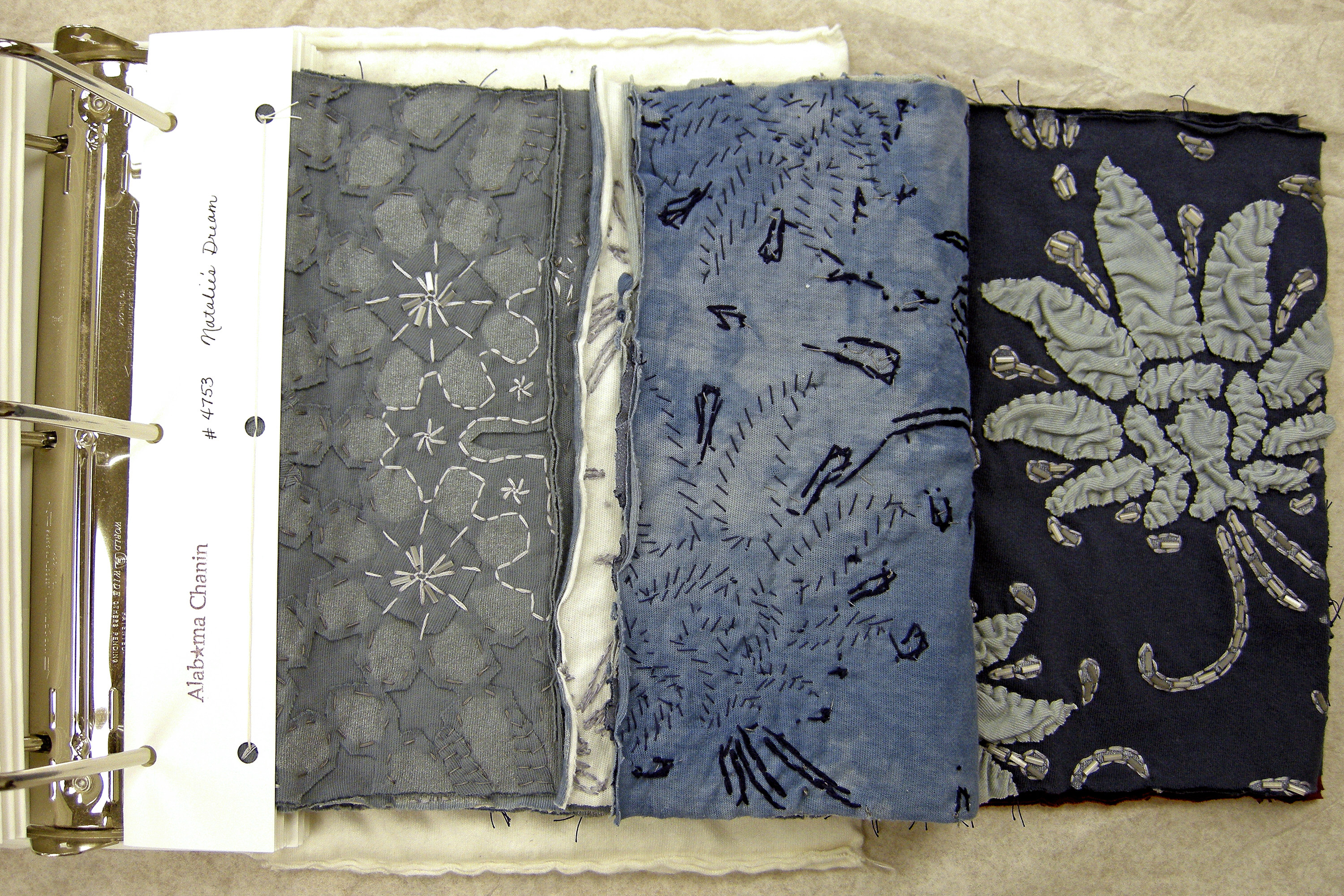After a decade of working as a designer and stylist in Europe, Natalie Chanin traveled to her hometown of Lovelace Crossroads, Alabama, to film a documentary, Stitch, about the southern quilting tradition. Ads placed in local newspapers brought in hundreds of stitchers, some formerly employed in Alabama’s once-thriving textile industry. Chanin created the fashion and home furnishings design firm Alabama Chanin to celebrate and preserve these uniquely American stitching traditions, and the communities in which they thrive. The company is based on the values embedded in the quilting tradition: re-use of materials, utility, craftsmanship, authorship, and beauty.
Alabama Chanin is influenced by the ‘slow food’ movement, which promotes the use of local ingredients, grown and harvested in a socially and environmentally responsible way. The company uses certified organic cotton grown in the USA, recycles and “upcycles” materials whenever possible, and, most importantly, works with local artisans, encouraging ecomomic development in a community that has suffered greatly from the loss of the textile industry in the southeastern United States. Cottage-industry style production allows artisans to work from their own homes, and organize their businesses around the needs of their families. The stitchers sign their work. The company uses ‘lean method’ manufacturing: nothing is made until an order is confirmed, ensuring that only what is required is produced, saving natural resources.
Because the hand-made garments can be prohibitively expensive, Chanin makes her designs accessible through instruction books and do-it-yourself Project Kits. Elaborately stitched surface techniques like the ones seen in this sample book– originally designed for a single season collection use- are now archived in a Fabric Library accessible to the public. The book represents a contemporary translation in knit jersey of a variety of traditional techniques, including embroidery, appliqué, reverse appliqué, couching, beadwork and more. It is a sampler in the most traditional sense—a record of stitching techniques to be used as an aid to memory as well as to share techniques with others. But it also embodies many of the most important design concepts of the 21st century: organic, local, sustainable, slow, and socially responsible.
A Maker’s Record

One thought on “A Maker’s Record”
Lynn Somerstein on December 7, 2015 at 11:51 am
Is it possible to view “A Maker’s Record” in the archives?
Thank you.